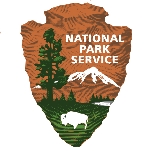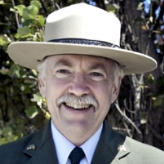Federal Historic Preservation Tax Incentives
Federal Preservation Institute
Heritage Education Services Program
Heritage Documentation Programs
Historic American Buildings Survey
Historic American Engineering Record
Historic American Landscapes Survey
Historic Landscape Initiative
Historic Preservation Grants Division
Historic Preservation Internship Training Program
Historic Preservation Planning Program
Historic Preservation Training Center
Historic Surplus Property Program
National Heritage Areas Program
National Historic Landmarks Program
National Native American Graves Protection and Repatriation Act Program
National Register of Historic Places
National Underground Network to Freedom Program
Park Historic Structures and Cultural Landscapes
Park History
Park Museum Management
Park Native American Graves Protection and Repatriation Act Program
Public Outreach Program
|
Motorola, Inc
|
$270,627,432
|
|
BAE Systems PLC
|
$247,401,615
|
|
The Weitz Company, LLC
|
$90,781,484
|
|
Watts-Delhur, A J V
|
$69,649,900
|
|
Swank Enterprises
|
$46,582,550
|
|
Marco Enterprises, Inc.
|
$40,976,011
|
|
Miller / Watts-Korsmo, J V
|
$38,446,442
|
|
Interstate Rock Products, Inc
|
$34,331,769
|
|
Dell, Inc
|
$33,957,935
|
|
VF Corporation
|
$30,052,840
|
$30 billion in historic rehabilitation projects
- Table of Contents
- Overview
- History
- What it Does
- Where Does the Money Go
- Controversies
- Suggested Reforms
- Comments
- Leave a comment


As with some of his other environmental appointments, President Barack Obama went with a career federal employee to lead the National Park Service. Jonathan B. Jarvis, a trained biologist, has spent the past 30 years working for the agency in a variety of positions overseeing national parks. Jarvis has said one of his primary goals as head of America’s national parks will be to implement policies that help the parks adapt to climate change in the coming years. He took over as Director of the National Park Service on October 2, 2009.

- Latest News
- D.C. Public Schools will Teach all Second-Graders to Ride a Bike
- New Rule in Germany Limits Sales of Sex-Themed E-Books to 10pm to 6am
- What Happened to the 6-Year-Old Tibetan Boy the Chinese Government Kidnapped 20 Years Ago?
- U.S. Ambassador to Turkey Photoshops his Hair Color to Mock Turkish Mayor
- Mystery Artist Calls Attention to Unfixed Potholes by Drawing Penises around Them
Federal Historic Preservation Tax Incentives
Federal Preservation Institute
Heritage Education Services Program
Heritage Documentation Programs
Historic American Buildings Survey
Historic American Engineering Record
Historic American Landscapes Survey
Historic Landscape Initiative
Historic Preservation Grants Division
Historic Preservation Internship Training Program
Historic Preservation Planning Program
Historic Preservation Training Center
Historic Surplus Property Program
National Heritage Areas Program
National Historic Landmarks Program
National Native American Graves Protection and Repatriation Act Program
National Register of Historic Places
National Underground Network to Freedom Program
Park Historic Structures and Cultural Landscapes
Park History
Park Museum Management
Park Native American Graves Protection and Repatriation Act Program
Public Outreach Program
|
Motorola, Inc
|
$270,627,432
|
|
BAE Systems PLC
|
$247,401,615
|
|
The Weitz Company, LLC
|
$90,781,484
|
|
Watts-Delhur, A J V
|
$69,649,900
|
|
Swank Enterprises
|
$46,582,550
|
|
Marco Enterprises, Inc.
|
$40,976,011
|
|
Miller / Watts-Korsmo, J V
|
$38,446,442
|
|
Interstate Rock Products, Inc
|
$34,331,769
|
|
Dell, Inc
|
$33,957,935
|
|
VF Corporation
|
$30,052,840
|
$30 billion in historic rehabilitation projects
Comments


As with some of his other environmental appointments, President Barack Obama went with a career federal employee to lead the National Park Service. Jonathan B. Jarvis, a trained biologist, has spent the past 30 years working for the agency in a variety of positions overseeing national parks. Jarvis has said one of his primary goals as head of America’s national parks will be to implement policies that help the parks adapt to climate change in the coming years. He took over as Director of the National Park Service on October 2, 2009.

- Latest News
- D.C. Public Schools will Teach all Second-Graders to Ride a Bike
- New Rule in Germany Limits Sales of Sex-Themed E-Books to 10pm to 6am
- What Happened to the 6-Year-Old Tibetan Boy the Chinese Government Kidnapped 20 Years Ago?
- U.S. Ambassador to Turkey Photoshops his Hair Color to Mock Turkish Mayor
- Mystery Artist Calls Attention to Unfixed Potholes by Drawing Penises around Them





Comments